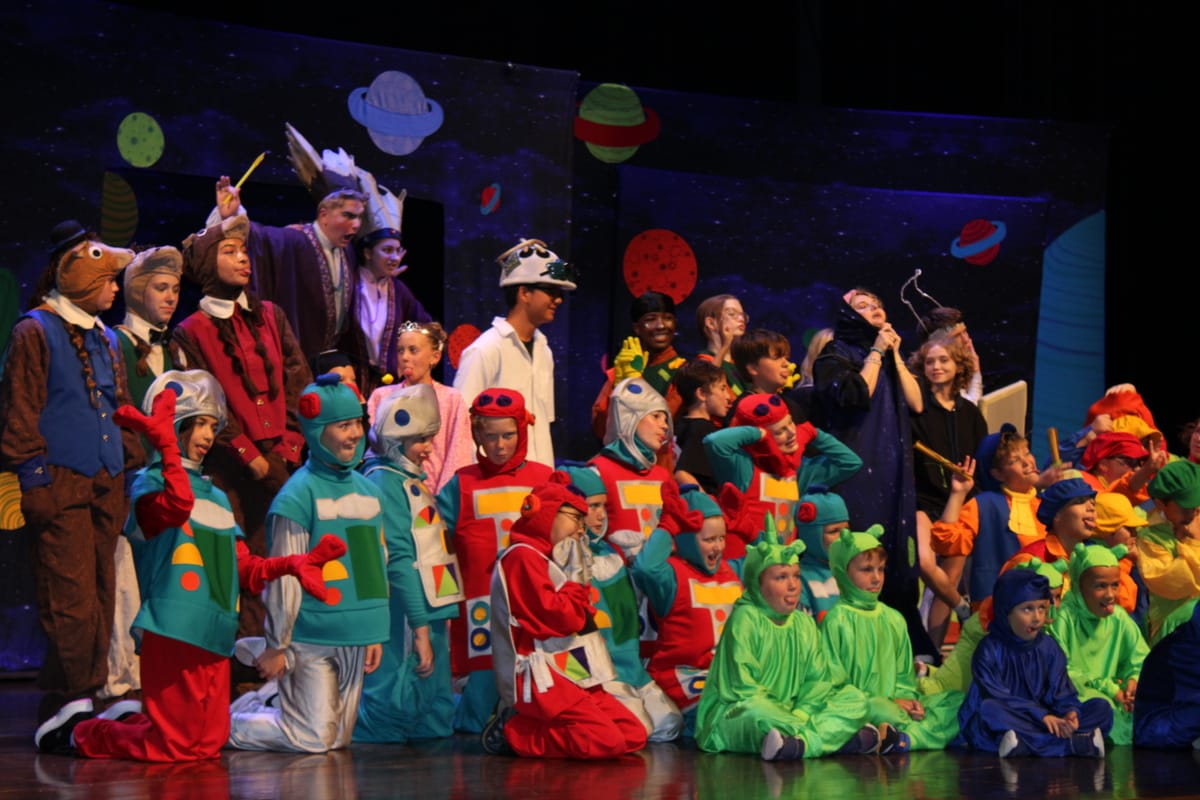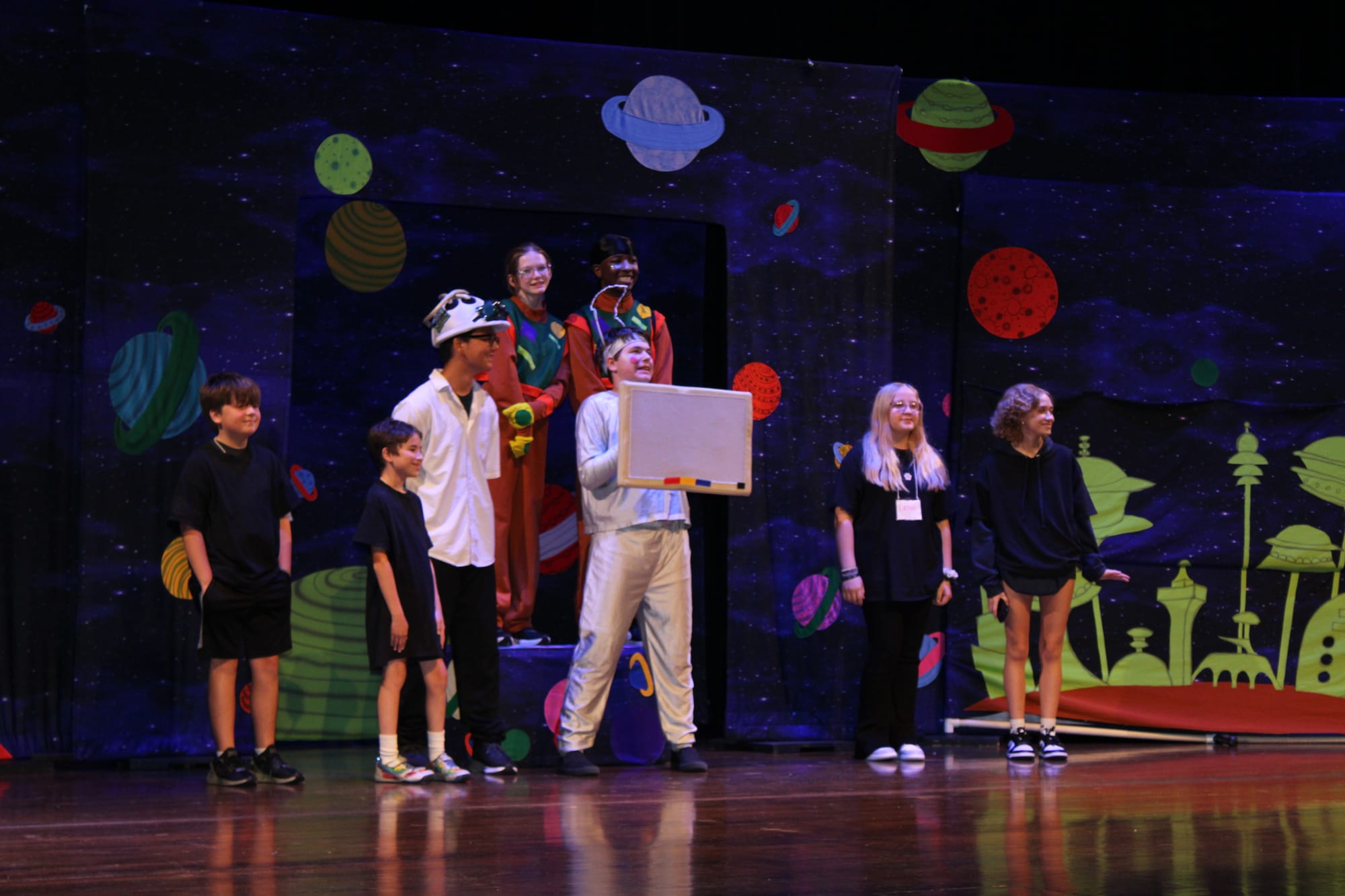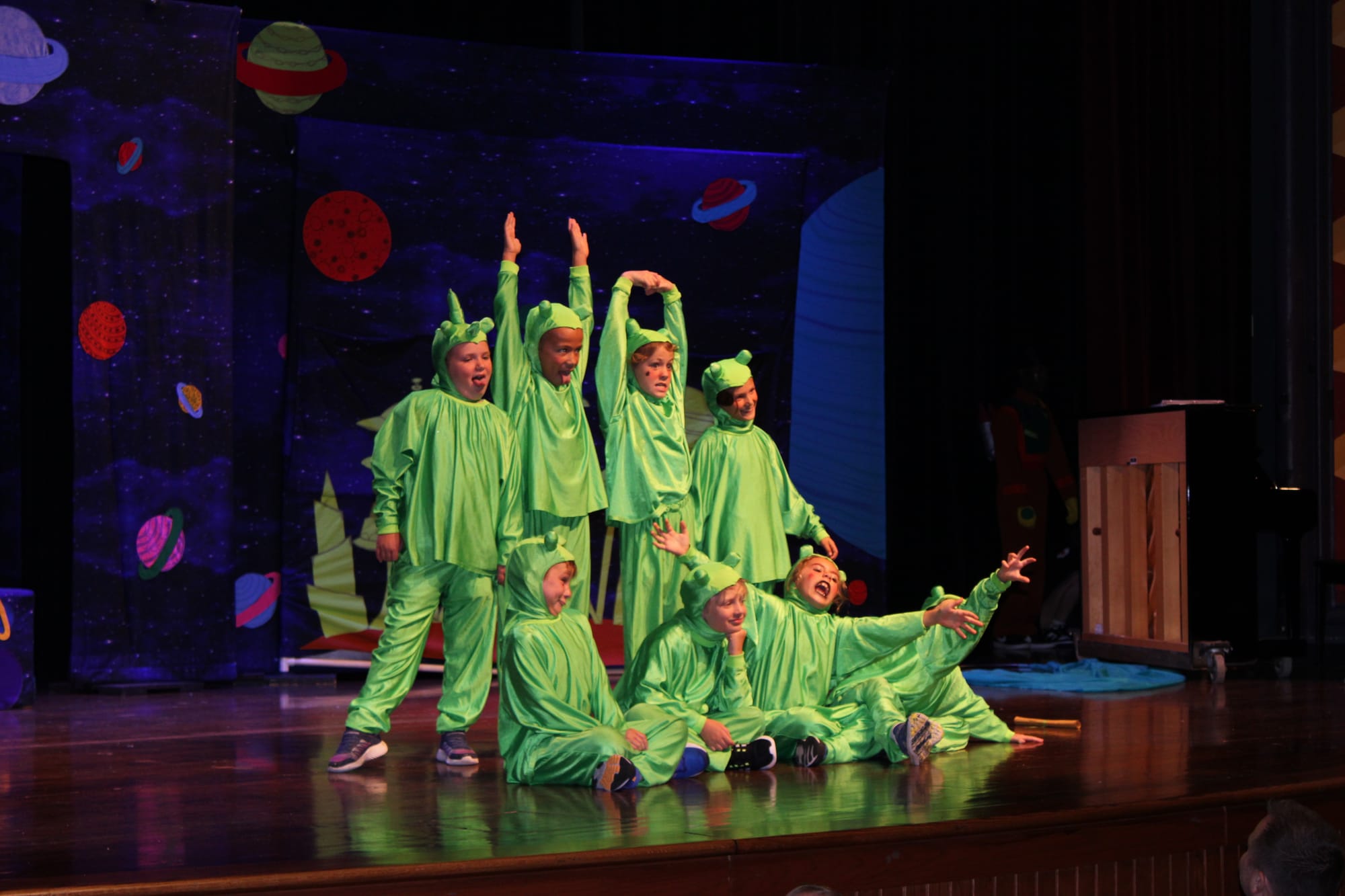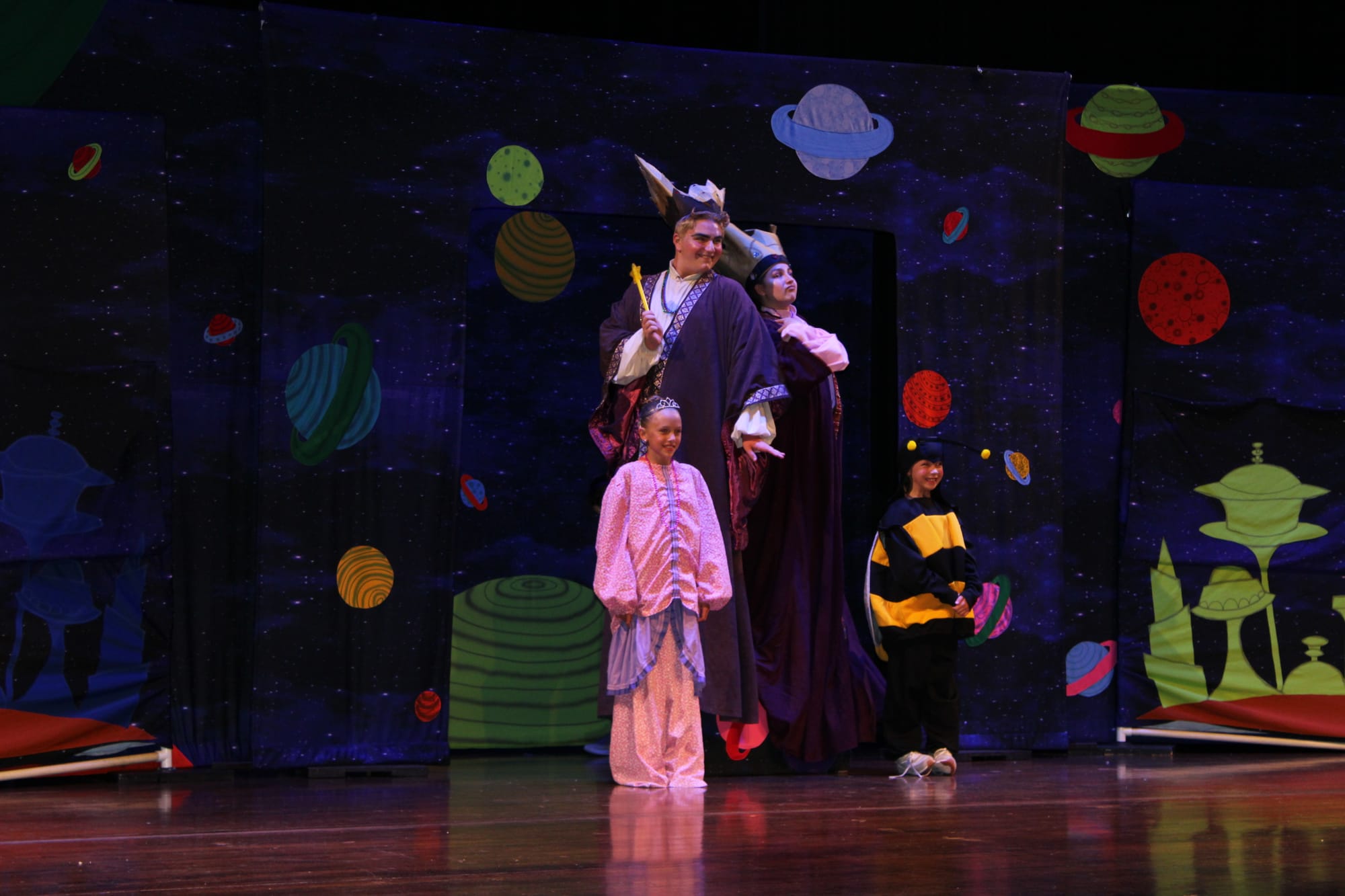Theater camp transports kids across the galaxy with production of ‘Gulliver’s Travels’
Missoula Children's Theatre brought planet-hopping adventures to Oxford with the help of local kids.

From 11 a.m. to 6 p.m. every day last week, dozens of kids gathered in Miami University’s Hall Auditorium, preparing to put on a show.
Roughly 50 local students ages 6-18 took part in this year’s annual Missoula Children’s Theatre production. This summer’s show, “Gulliver’s Travels,” may have sounded familiar to fans of Jack Black or 16th century English satire, but this wasn’t Jonathan Swift’s telling of the tale. Instead, audience members were transported across the galaxy during the hour-long show on Aug. 9.
Missoula Children’s Theatre, a nonprofit organization based in Missoula, Montana, brings local productions to communities in all 50 states and 16 countries. A touring staff travels with the equipment, scripts and materials necessary to put on the show, then spends a week teaching local kids their parts ahead of the final performance.
This summer, four separate tour groups brought “Gulliver’s Travels” to nearly 30 cities across the U.S. Oxford was the last stop for director Alysa Richards and cast member Calliope Johnson, who played the Invisible Force guiding Gulliver to several planets with the help of her transporter.

For Ellie Wonsik, the production was one of her last big events of the summer before starting fourth grade. She played one of the yahoos, a rowdy group of humans on the planet of [NAME] who live under the rule of the Houynhnm (that’s who-in-um) Horses who don’t want the yahoos to go to school.
This was Ellie’s first year in the Missoula production, but she’s already a pro at theater. She’s been in productions for the Oxford Community Arts Center and in Hamilton before.
“This was probably my favorite one,” Ellie said of “Gulliver’s Travels.” The week of rehearsals wasn’t too hard, either, she said. And her favorite part of being involved? Easy: “I liked everything.”
Along with the yahoos and the Houynhnm Horses, the show also featured blue blefuscudians who feuded with the green lilliputians, a giant king, queen and princess all determined to keep Gulliver as a doll or subject, robots acting under the tutelage of a maniacal scientist, Gulliver’s malfunctioning robot sidekick JCN, and of course, a wasp. Every cast member except for Johnson, who played the Invisible Force, was a local kid, and two actors traded out the role of Gulliver each time the scenery changed.
Throughout his journey, Gulliver learned the importance of working together and being kind to everyone regardless of differences, as well as the difference education can make in people’s lives. “School is cool,” as the cast sang in multiple songs throughout the show.


Gulliver’s planet-hopping adventures brought him to the home of a family of giants desperate for subjects to rule, and to the planet of the green Lilliputians. Photos by Sean Scott
While most of the kids involved in the production go to the Talawanda School District, the event was part of Miami’s Performing Arts Series. Several college students also got involved as staff for the camp this year, helping make sure rehearsals ran smoothly and leading the kids in crafts during any downtime.
This was rising seventh grader Laney Call’s second year taking part in Missoula’s production, which her sister has also been involved with for three years. She helped out as one of the assistant directors this year after her grandma encouraged her to get involved last year. The role involved a lot of management, Laney said.
“You help them remember their lines, you tell them when to go on, and you get them in their positions and stuff, and then you help move the props,” Laney said. Taking part has helped her learn how challenging it can be to make sure younger kids especially stay quiet and behave backstage, she said.
Gwenmarie Ewing, assistant director for Miami’s Performing Arts Series, said the Missoula theater camp initially saw a dip in enrollment during the pandemic but is rebounding now. The camp typically runs in the first or second week of August for Oxford, with registration opening in late May or early June.
Ewing said Missoula Children’s Theatre has strict limits on the number of participants per age groups, which the Oxford production typically reaches for 8-18-year-olds but hasn’t reached for children under seven or entering first grade since the pandemic.




